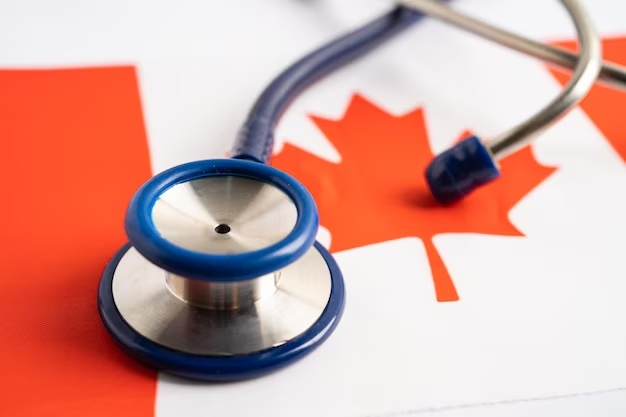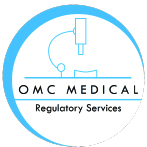Canada
Canada

Canada Medical Device Regulations
OMC Medical offers support with the Health Canada medical device registration, contact us at info@omcmedical.co.uk to start with your registration process.
The regulations in Canada are as follows:
Regulatory Authority: Health Canada, Health Products and Food Branch, Therapeutic Products Directorate, Medical Devices Bureau
Regulation: Medical Devices Regulations (SOR/98-282)
Representative (should be based in country or not): No requirement.
Documents required for registration (notarization or legalization required or not?): Application for a New Medical Device License for a Private Label Medical Device.
The following represent the device license application “types” a manufacturer may apply for:
A single medical device:
A medical device that is identified by a unique device name, is sold as a distinct packaged entity and does not meet the criteria for a medical device group, a medical device family, a medical device group family, a system, or a test kit. It may be offered in a range of package sizes, and is represented by a unique device name.
Examples might include: an acupuncture needle, an aneurysm clip, a larynx prosthesis or dental cement.
A medical device family:
Means a group of medical devices that are made by the same manufacturer, that differ only in shape, colour, flavour or size, that have the same design and manufacturing process and that have the same intended use.
Examples might include: intra vascular catheters, insulin syringes, feeding tubes or vascular access grafts.
A medical device group:
Means a medical device comprising a collection of medical devices, such as a procedure pack or tray, that is sold under a single name. Examples might include: a denture repair kit, a declotting tray, a parenteral administration kit or disposable circumcision tray.
A medical device group family:
Means a collection of medical device groups that are made by the same manufacturer, that have the same generic name specifying their intended use, and that differ only in the number and combination of products that comprise each group.
Examples might include: IV administration sets, dressing trays, contact lens care kits or irrigation trays.
System:
Means a medical device comprising a number of components or parts intended to be used together to fulfil some or all of the device’s intended functions, and that is sold under a single name and are manufactured by the same manufacturer.
Examples might include: hip prostheses, knee prostheses or an ultrasonic imaging system.
Test Kit:
Means an in vitro diagnostic device that consists of reagents or articles, or any combination of these, and that is intended to be used to conduct a specific test.
For further assistance in ascertaining the appropriate license application type for your product, consult the Guidance for the Interpretation of Sections 28 to 31: License Application Type.
A single medical device:
A medical device that is identified by a unique device name, is sold as a distinct packaged entity and does not meet the criteria for a medical device group, a medical device family, a medical device group family, a system, or a test kit. It may be offered in a range of package sizes, and is represented by a unique device name.
Examples might include: an acupuncture needle, an aneurysm clip, a larynx prosthesis or dental cement.
A medical device family:
Means a group of medical devices that are made by the same manufacturer, that differ only in shape, colour, flavour or size, that have the same design and manufacturing process and that have the same intended use.
Examples might include: intra vascular catheters, insulin syringes, feeding tubes or vascular access grafts.
A medical device group:
Means a medical device comprising a collection of medical devices, such as a procedure pack or tray, that is sold under a single name. Examples might include: a denture repair kit, a declotting tray, a parenteral administration kit or disposable circumcision tray.
A medical device group family:
Means a collection of medical device groups that are made by the same manufacturer, that have the same generic name specifying their intended use, and that differ only in the number and combination of products that comprise each group.
Examples might include: IV administration sets, dressing trays, contact lens care kits or irrigation trays.
System:
Means a medical device comprising a number of components or parts intended to be used together to fulfil some or all of the device’s intended functions, and that is sold under a single name and are manufactured by the same manufacturer.
Examples might include: hip prostheses, knee prostheses or an ultrasonic imaging system.
Test Kit:
Means an in vitro diagnostic device that consists of reagents or articles, or any combination of these, and that is intended to be used to conduct a specific test.
For further assistance in ascertaining the appropriate license application type for your product, consult the Guidance for the Interpretation of Sections 28 to 31: License Application Type.
MDEL/MDL Application
Declaration of Conformity (DoC)
ISO 13485 + MDSAP certificate
Labelling
Technical File
Declaration of Conformity (DoC)
ISO 13485 + MDSAP certificate
Labelling
Technical File
MDEL – 120 calendar days
Class II – 2 months
Class III & IV – 4-8 months
Class II – 2 months
Class III & IV – 4-8 months
Determine the classification on the device.
Class I – Medical Device Establishment License (MDEL) Application
Other – Medical Device License (MDL) Application
The agency will evaluate the application
If approved, the manufacturer can market the device in Canada.
Class I – Medical Device Establishment License (MDEL) Application
Other – Medical Device License (MDL) Application
The agency will evaluate the application
If approved, the manufacturer can market the device in Canada.
Annual renewal of license
ISO 13485 + MDSAP
French & English
Class I, II, III and IV
Labelling in French and English
The private label device license application must include a letter signed by an authorized senior official of the original manufacturer on the original manufacturer letterhead in the format prescribed in Appendix 2.
Lorem ipsum dolor sit amet, consectetur adipiscing elit. Ut elit tellus, luctus nec ullamcorper mattis, pulvinar dapibus leo.
Class II, III and IV device manufacturer needs to switch to Medical Device Single Audit Program (MDSAP) to obtain the ISO 13485 certificate.
What We Offer?
- Register your medical devices for MDL/MDEL.
- Keep you up to date with the Canadian regulatory requirement.
- Help you with MDSAP & ISO 13485 certificate
- Registration on the DIMDI
Why Choose Us?
- Working towards client satisfaction
- Cost effective solutions
- Project completion before deadline
- Quality Regulatory affairs solutions
Contact us for free consultation: info@omcmedical.
Quick Contact
If you have any questions or need help, feel free to contact with our team.
©2025 OMC Medical, All Rights Reserved. With Love by 7oroof.com

Our team will be happy to respond your queries. Contact us directly with your questions or for scheduling FREE consultation and we’ll be in touch as soon as possible.
Quick Contact
If you have any questions or need help, feel free to contact with our team.

Our team will be happy to respond your queries. Contact us directly with your questions or for scheduling FREE consultation and we’ll be in touch as soon as possible.
Quick contact
- info@omcmedical.co.uk
-
0044 7719761764
0044 2080667260 - Planet House, North Heath Lane, Horsham, West Sussex RH12 5QE

Our team will be happy to respond your queries. Contact us directly with your questions or for scheduling FREE consultation and we’ll be in touch as soon as possible.
Our Branches
- Switzerland
- Europe (Northern Ireland)
- Asia
- Canada
- Brazil
- Middle East
- China
- Turkey (Partner Office)

To launch a medical device in a country, medical devices must comply with the local country’s regulatory requirements. Let us be your trusted partner in bringing your medical devices to the Global market. Contact us today to learn more about how we can assist you in every step of the way.
Our Branches
- Europe
- Asia
- Africa
- Oceania
- South America
- North America
- Planet House, North Heath Lane, Horsham, West Sussex RH12 5QE
- Planet House, North Heath Lane, Horsham, West Sussex RH12 5QE
Copyright © 2025 OMC Medical. All Rights Reserved OMC Medical


